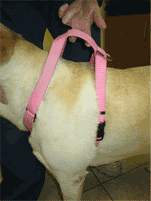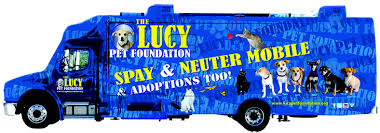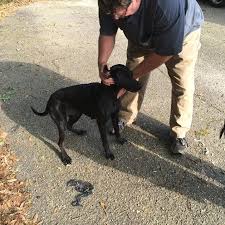Pot for Pets?
Stephen M. Katz, Therabis
 Dr. Stephan Katz, a New York City Veterinarian, explains how he used parts of the marijuana plant to create therapeutic remedies for pets. Do animals respond the same as humans to medical marijuana? What is the legality of pot for pets? These burning questions and more were finally answered.
Dr. Stephan Katz, a New York City Veterinarian, explains how he used parts of the marijuana plant to create therapeutic remedies for pets. Do animals respond the same as humans to medical marijuana? What is the legality of pot for pets? These burning questions and more were finally answered.
Just like with humans, there are also therapeutic values in marijuana for pets. However, veterinarians are not allowed to prescribe medical marijuana to their clients.
Dr. Katz created a formula for pets with a hemp-powdered base that contained numerous natural ingredients that also included the compound known as cannabidiol (otherwise known as CBD). This is a cannabinoid found in the marijuana plant that has absolutely no psychogenic capabilities whatsoever. CBD is a well-known anti-inflammatory among its other properties. Dr. Katz has three formulations, "Up and Moving," "Calm and Quiet" and "Stop the Itch."
The "Up and Moving" is a formulation that contains hemp powder that is derived from the seed and stem of an industrial hemp plant, which is used to make things like ropes and dresses and even put into creams for women. As they age, arthritis and hip dysplasia in dogs become more and more common. Up and Moving provides powerful mobility support-green lipped mussel, vitamin C, chromium, hemp powder and cannabinoids.
Dr. Katz also has one of the largest Pit Bull practices in the country. In his practice, a client may leave their house, and when they return, half of their wall may have been eaten. By using his "Calm and Quiet, " he states you can actually see it start working in about 20 minutes. It's also great for dogs traveling in a car or on an airplane.
"Stop the Itch" leverages CBD, a natural constituent of hemp, at the core of its formulation to soothe your dog's skin. The unique combination of whole-plant cannabinoids, bromelain and quercetin protects cells from oxidative stress and helps ease the torment of itching and scratching.
Therabis remedies are administered as a highly palatable powder that you can add to peanut butter and make a treat out of it or you can just add it right to their food.
Dr. Katz wants it understood that he is not using medical marijuana. His products are derived from hemp, which is different from marijuana. Currently there are over 80 different separable cannabinoids, which are compounds found in the cannabis plant. Many of those have great medicinal potential. However, there is only one that gets you high and that is Delta 9 THC.
Dr. Katz's mission is to train and teach people about the medical properties of the cannabinoids that are found in the marijuana plant and that nothing he does can get an animal "high."
Therabis is a legal product that can be shipped all over the country. However, it has to be derived from industrial hemp grown outside of the United States. The cannibidiol also has to be extracted outside of the U.S.
Visit Website
Life Lessons from a Divine Knucklehead
Doug Green, The Teachings of Shirelle
 Doug Green learned a lot of life's lessons from his dog, Shirelle. He even said that the dog was responsible for his career path as a psychotherapist and that dogs are great intermediaries in his practice. He shares some of the important epiphanies inspired by Shirelle
Doug Green learned a lot of life's lessons from his dog, Shirelle. He even said that the dog was responsible for his career path as a psychotherapist and that dogs are great intermediaries in his practice. He shares some of the important epiphanies inspired by Shirelle
While Doug states that Shirelle wasn't the smartest dog he ever knew, or the noblest, or even purest breed and was kind of a dope most of the time, she was the greatest teacher of timeless wisdom and taught him many lessons.
When Doug first met Shirelle, she was about three months old and in a cage at the pound. He noticed that there was no card on her cage so there was no information on her. When he asked one of the employees about her, he was told that another person could help him get information on "Knucklehead." It turned out the pound was very crowded and unfortunately dogs weren't kept any longer than four days. Shirelle had been there five days and had already developed a reputation and acquired her nickname. One of the employees had fallen in love with her and had stolen the card so no one would know how long she had been there, to give her more time.
After Doug had Shirelle for about two weeks, she was pretty much potty trained, but of course still had the occasional accident. One day he arrived home and found her under the dining room table, peeing on the carpet. Up until that time, she had never barked, partly because of her breed makeup. Doug sternly told her, "No!" and she started to bite his leg. He again told her no, as she turned around and started licking the urine. She was told no again when she started to bite the table leg. After a few more, "Nos!" she looked at him with furious frustration rage in her eyes and out of her came a pathetic sound. Doug said it was the cutest thing he ever heard. He then picked her up and cuddled her and apologized profusely.
What Doug remembers most at that moment, is that is when he fell in love with her. But years later it struck him that there was a profound moment there, because as she grew older she developed the ugliest bark he has ever heard out of any dog and she never once hesitated to bark again. Shirelle had learned early on that her voice was loved and lovable.
 In Doug's work as a therapist, he finds too often that children learn the opposite. Perhaps their parents told them that anything they do is fine and don't worry about it - then they're screwed up for life! Or they tell them how horrible they are.
In Doug's work as a therapist, he finds too often that children learn the opposite. Perhaps their parents told them that anything they do is fine and don't worry about it - then they're screwed up for life! Or they tell them how horrible they are.
What Shirelle got out of the peeing incident was not to pee inside the house, don't bite the table, don't bite dad and your voice is treasured! So she grew up with this belief in herself; this okay-ness; this lack of shame that we suffer so much from.
Doug states that this was an incredible fountain of goodness and lessons and that dogs live in the moment, knowing what they've learned, which is so spectacular. People work so hard at this, including mediation, but dogs just have it!
An example that Doug loves to tell people is that when you first walk out the door in the morning, what do you do first? He states people usually run out the door, slam it, lock it, run to their car because they're running late to work. They are probably cussing, maybe they've forgotten something, and so they run back inside and grab it and get in their car. Next, they start cussing out the drivers that are in their way - sound familiar? But when you open the door for your dog, they are going to run outside and stop and take it all in and for just one second their ears are up. If we did that every morning and said, "Wow, what a beautiful day!" it will change our whole morning. You can still cuss the drivers out that are in your way, because they deserve it! However, you're in a better and more cheerful place for it.
If we take the time, we can all learn from our dogs.
Visit Website
Get Your Pet To the Vet Safely with No Escapees - Dr. Debbie
 A frightening situation occurred at my veterinary hospital. Working inside my office, I heard a woman's shrieks coming from the parking lot. I ran outside to find a woman with one dog on a leash, and the other dog skittering about the parking lot - the result of a slipped collar. The owner would approach the panicked dog and he'd retreat, darting under nearby cars. Those familiar with our hospital location understand its proximity to a busy intersection. Should the dog run in the wrong direction, he'd meet up with 45 mph traffic.
A frightening situation occurred at my veterinary hospital. Working inside my office, I heard a woman's shrieks coming from the parking lot. I ran outside to find a woman with one dog on a leash, and the other dog skittering about the parking lot - the result of a slipped collar. The owner would approach the panicked dog and he'd retreat, darting under nearby cars. Those familiar with our hospital location understand its proximity to a busy intersection. Should the dog run in the wrong direction, he'd meet up with 45 mph traffic.
My staff was outside in moments to assist the owner in retrieving her dog and safely escorted everyone into the building. Thankfully, my client's few minutes of terror ended uneventfully. But that's not always the case. I've seen dogs run straight into the road, cat's leap from a family member's arms, and owners dive into oncoming traffic trying to catch an escaping pet.
The lesson is simple. Don't underestimate your pets' fears. Fear of car travel, new places or the veterinary office can cause a pet to behave in unpredictable ways. If you know your pet to be nervous with new people or new situations, be especially vigilant when transporting your pet in a vehicle.
Identify Your Pet
Use two methods of identification for best insurance your pet is returned to you if lost. Permanent identification with a microchip is a must and should be complimented with a collar and ID tags.
Restrain Pet in Vehicle
Keep your pet secure during travel and when the car door opens by using a doggie seatbelt. Small dogs and cats should be housed in a pet carrier which is secured with seatbelt to avoid undue carrier movement during travel. Do not allow cats and small pets to roam freely in the car. Cats have been known to take cover under car seats which may require sedation or seat removal to extract kitty from her hiding place.
Check for Proper Fit


 A proper fitting collar allows 2 finger widths between the collar and pet's neck. Allow more than, and should your pet put on the brakes, he'll easily slip out of the collar. Poor fitting harnesses are just as dangerous and allow gap room which allows a back-peddling pet to wiggle out. Not sure if the collar is too loose? Snug the collar up one fitting in anticipation of your trip to the vet.
A proper fitting collar allows 2 finger widths between the collar and pet's neck. Allow more than, and should your pet put on the brakes, he'll easily slip out of the collar. Poor fitting harnesses are just as dangerous and allow gap room which allows a back-peddling pet to wiggle out. Not sure if the collar is too loose? Snug the collar up one fitting in anticipation of your trip to the vet.
Try Other Collar Styles
Even if you don't normally use a choker or pinch collar, consider using one when going to the vet's office. For thick necked dogs with smaller head size, try the Martingale collar, a fabric and metal combo collar that snugs down should your dog try to back out. Boisterous dogs that jump and leap when on leash may benefit wearing a head collar that fits over the muzzle. Ensure your collar choice is properly fitted, since any of these styles can fail if improperly fitted or used incorrectly.
Call Ahead
If you anticipate difficulties getting your pet to the vet's office, call ahead. Veterinary staff members are on the ready to help ensure your pet's visit is a safe one.
So, take a few minutes to consider your pet's travel safety before heading out on that next car trip, whether it is to the park, groomer or veterinary office. Your four legged friend will thank you, but may pout on the way there.
Featured veterinarian known as "Dr. Debbie" on national pet radio program, Animal Radio. Ebook author of "Yorkshire Terriers: How to Be Your Dog's Best Friend"; "Pugs: How to Be Your Dog's Best Friend"; "Mini Schnauzers: How to Be Your Dog's Best Friend"; and "Shih Tzu: How to Be Your Dog's Best Friend." Dr. Debbie's books.
Visit Website
To Flush or Not to Flush
Doc Halligan, Lucy Pet Foundation
 It may be hard to believe, but people still flush kitty litter down the toilet. Not only is it bad for the pipes, Doc Halligan says, it's also bad for marine life. Apparently, there is a parasite that is transmitted through cat feces that has been documented as a significant killer of otters and other sea life. Who knew?
It may be hard to believe, but people still flush kitty litter down the toilet. Not only is it bad for the pipes, Doc Halligan says, it's also bad for marine life. Apparently, there is a parasite that is transmitted through cat feces that has been documented as a significant killer of otters and other sea life. Who knew?
As people have become more conscience of the environment, there has been a push to flush animal feces and litter down the toilet. Flushing cat litter down the toilet, even if that cat litter is marketed as safe for pipes or septic tanks, allows a parasite called Toxoplasma gondii, found in some cat feces, to enter the water supply. This parasite is not destroyed by sewage treatment and eventually makes its way into the ocean.
Once in the ocean, the parasite sinks to the bottom where it is consumed by creatures like crabs, anchovies and sea stars, which are in turn eaten by marine mammals including sea otters. Sea otters are particularly susceptible to the parasite, which can cause brain damage and death. This is of particular concern on the California coast where the sea otter population that was once 15,000 and has dwindled to 2,500. Research has shown that in 17 percent of dead otters examined by the state Department of Fish and Game; this parasite was the primary cause of death.
California actually discourages the flushing of used cat litter and legislation requires labeling on all flushable cat litter, warning consumers about the dangers of flushing cat feces.
From a plumber's perspective there's a whole other concern. Many plumbers responding to clogged toilets find cat feces and litter completely stopping up the drains. The issues are even more pronounced when flushing to a septic system. Septic systems are not designed to break down cat feces or litter, and if you engage in such a practice, be prepared to have your septic tank pumped out much more frequently. Sewer pipes, septic systems and sewer treatment plants are designed to transport and breakdown human waste and human waste only.
Therefore it is NOT advisable to flush kitty litter down the toilet in ANY circumstance.
 The Mission of The Lucy Pet Foundation is to reduce pet overpopulation by having mobile spay/neuter clinics across the country and to support causes that benefit animal welfare. The Lucy Pet Foundation currently has two buses that travel around Southern California focusing on spaying and neutering. These buses are state of the art surgery units. Their next focus is in generating more funds to expand the work of these buses and have more across the country.
The Mission of The Lucy Pet Foundation is to reduce pet overpopulation by having mobile spay/neuter clinics across the country and to support causes that benefit animal welfare. The Lucy Pet Foundation currently has two buses that travel around Southern California focusing on spaying and neutering. These buses are state of the art surgery units. Their next focus is in generating more funds to expand the work of these buses and have more across the country.
The Lucy Pet Foundation not only offers free and reduced spays and neuters, they also do microchipping, vaccines and de-wormings. Spaying and neutering is not only great for pet population control, but it has been proven that an animal will live on an average of 40-percent longer after having this surgery.
Visit Website
Animal Radio News - Lori Brooks
 Dogs Labeled as Pit-Bulls Have Harder Time Getting Adopted
Dogs Labeled as Pit-Bulls Have Harder Time Getting Adopted
A study says dogs labeled as pit-bulls sit un-adopted far longer at shelters AND potential adopters view them as much less attractive. The research also proves that the pit-bull label heavily and negatively influences a dog's chances of adoption from a shelter. It happens even though many dogs labeled pit bulls, which isn't even a breed, aren't genetically pit-bull-types at all. The authors of the study, published in PLOS One, concluded that removing breed labels would be best for all shelter dogs. Here are the takeaways from the study:
1. Dogs labeled as a "pit bull" spend more than three times longer in a shelter than similar-looking dogs not labeled as pit bulls.
2. The company a pit bull keeps influences how it's perceived. College students were shown photos of each of the same three dogs next to a human: an elderly woman, a middle-aged woman in a wheelchair, a boy, a middle-aged athletic-looking man and a "rough-looking" man with tattoos. Survey respondents judged pit bulls to be friendlier and more adoptable when they were next to the boy or the elderly woman.
3. Pit-bull-types at shelters are more likely to be adopted if they're given no breed label and so are all dogs.
Researchers analyzed more than 17,000 adoption records and found that 52-percent of pit-bull-types were adopted when their supposed breed was listed, and 64-percent were adopted when the shelter did NOT use any breed labels. All other breeds also were adopted at higher rates and Mastiff adoptions went up 15-percent.
 Dog Goes Potty - Finds Pound of Marijuana
Dog Goes Potty - Finds Pound of Marijuana
Did you hear about the dog that went out to do her business and returned moments later as a crime-fighting hero? A black lab mix received a certificate for bringing home a pound of marijuana that started an investigation by the Jones County, Mississippi, Sheriff's Office. Here's how it happened. A dog left the house on a bathroom outing and brought back what appeared at first to be trash that she had torn through. But on closer inspection, her owner suspected it was marijuana, so she contacted authorities.
 Listen to the entire Podcast of this show (#1219)
Listen to the entire Podcast of this show (#1219)





